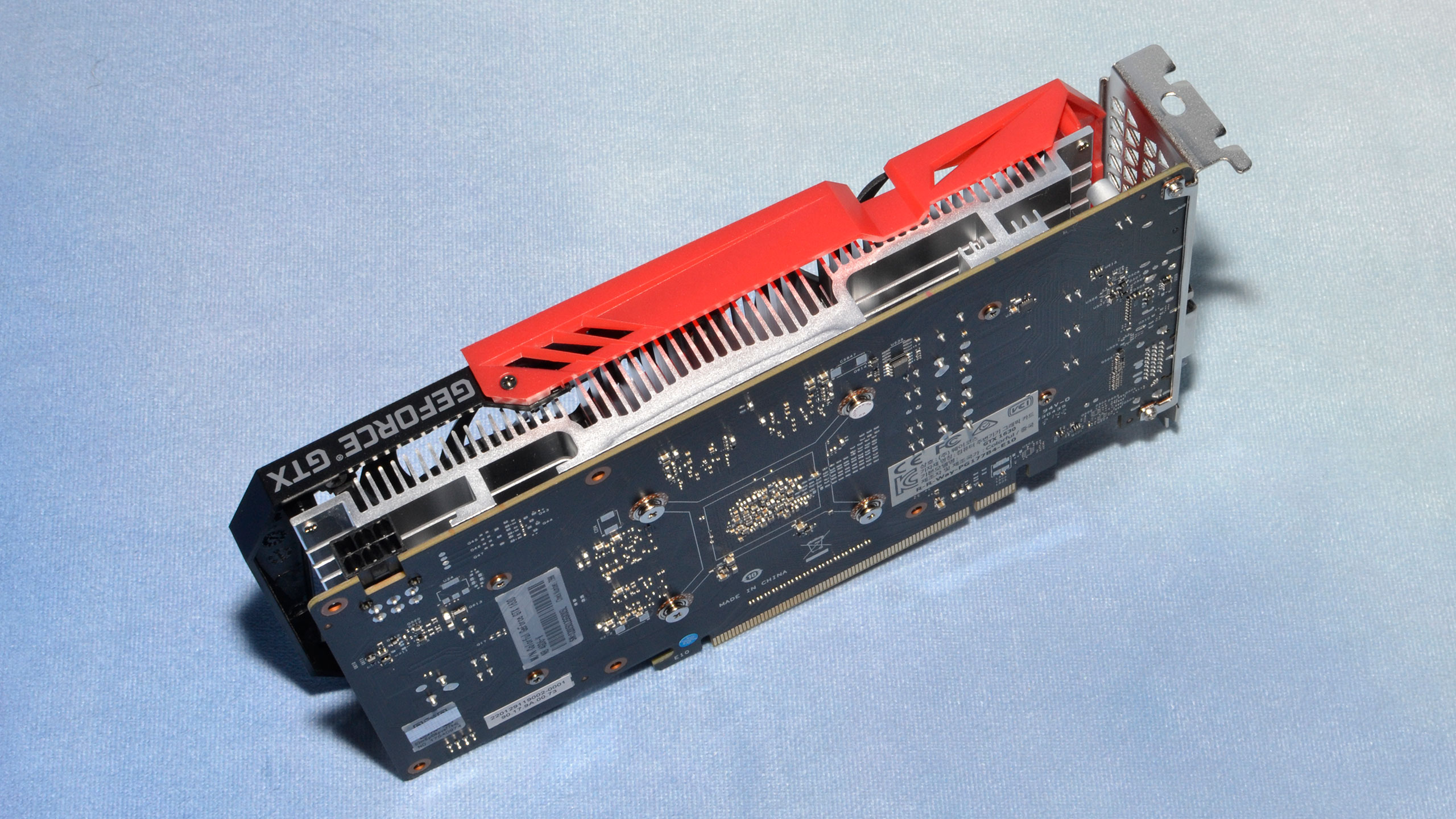Why you can trust Tom's Hardware
For our power, temperature, clock speed, and fan speed testing, we use Powenetics testing hardware and software. We capture in-line GPU power consumption by collecting data while looping Metro Exodus — this time at 1080p medium instead of our normal 1440p ultra, due to the underpowered GPU. We also test with the FurMark stress test at 1600x900. Our power testing PC uses an open testbed, as that's required for all the extra wires and riser card, and it's the same Core i9-9900K that we've used for the past several years.
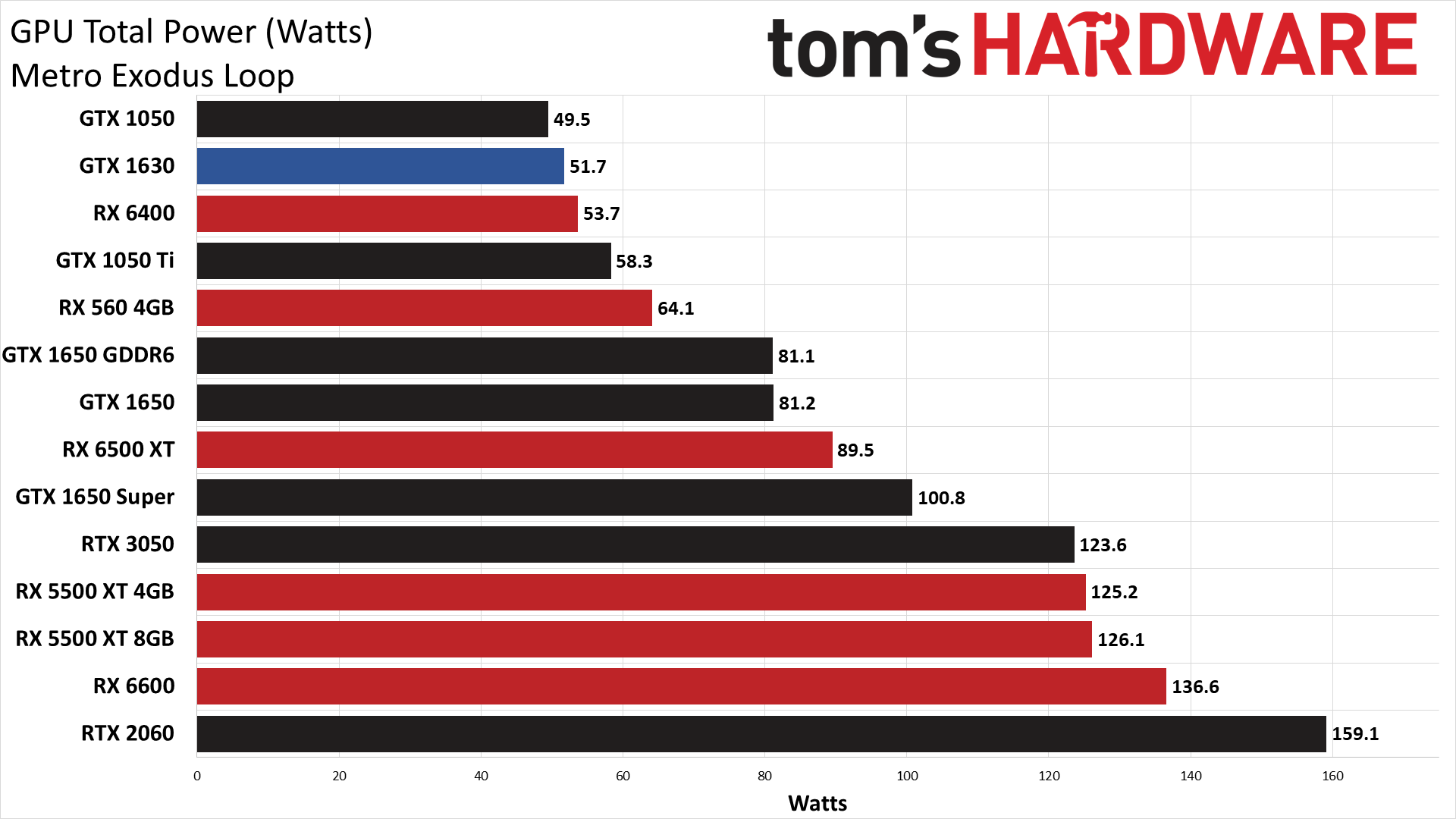
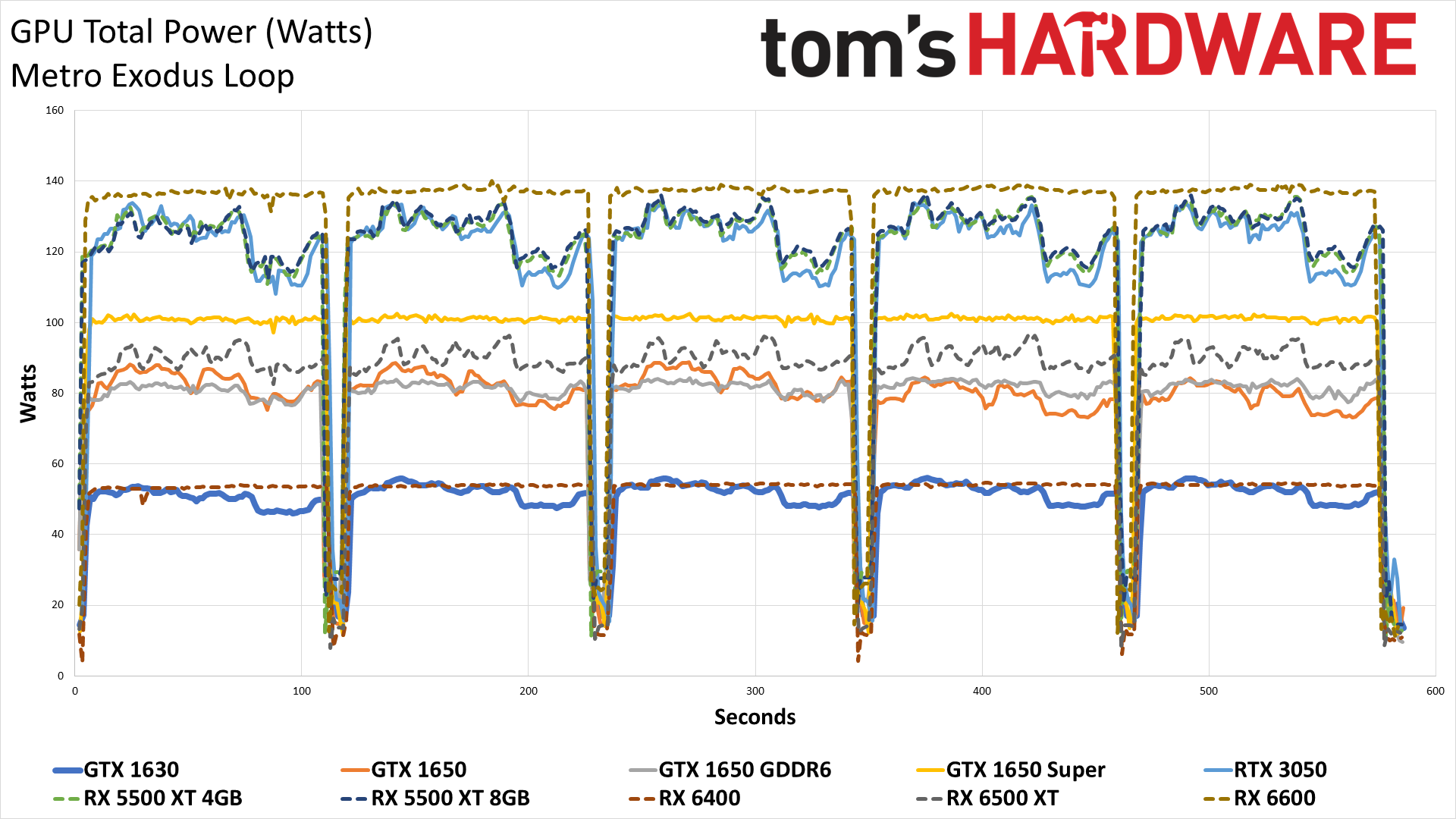
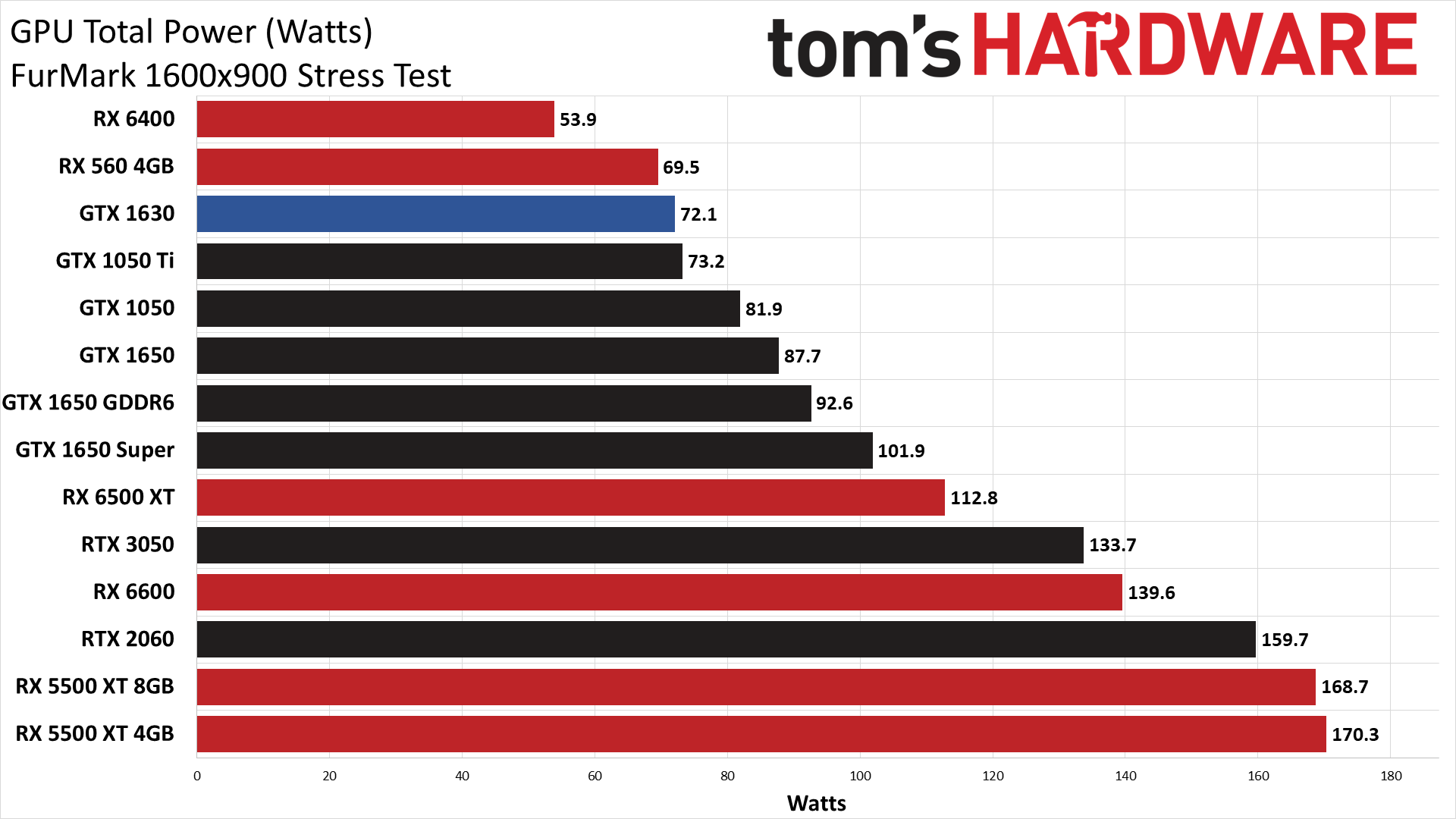
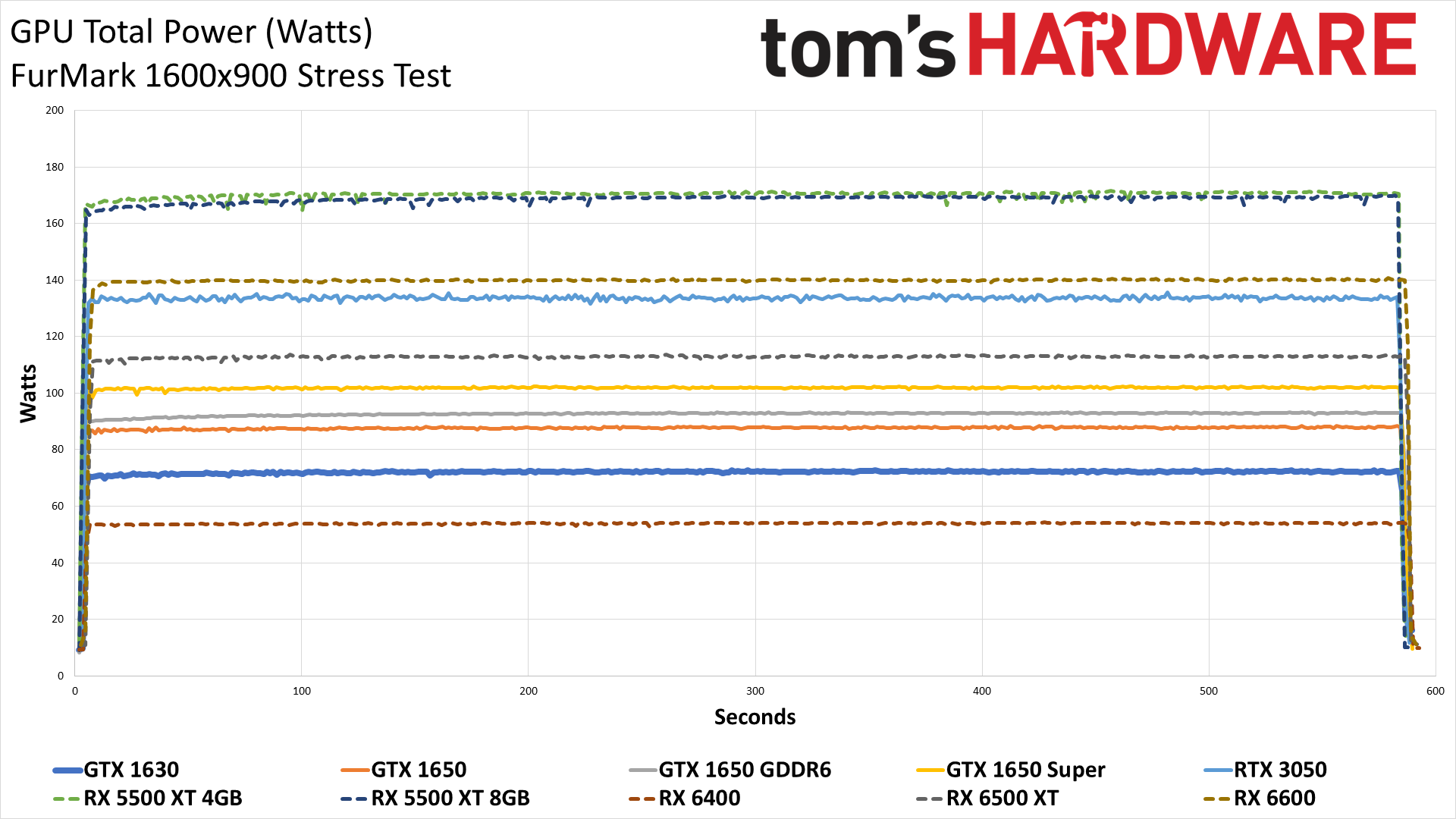
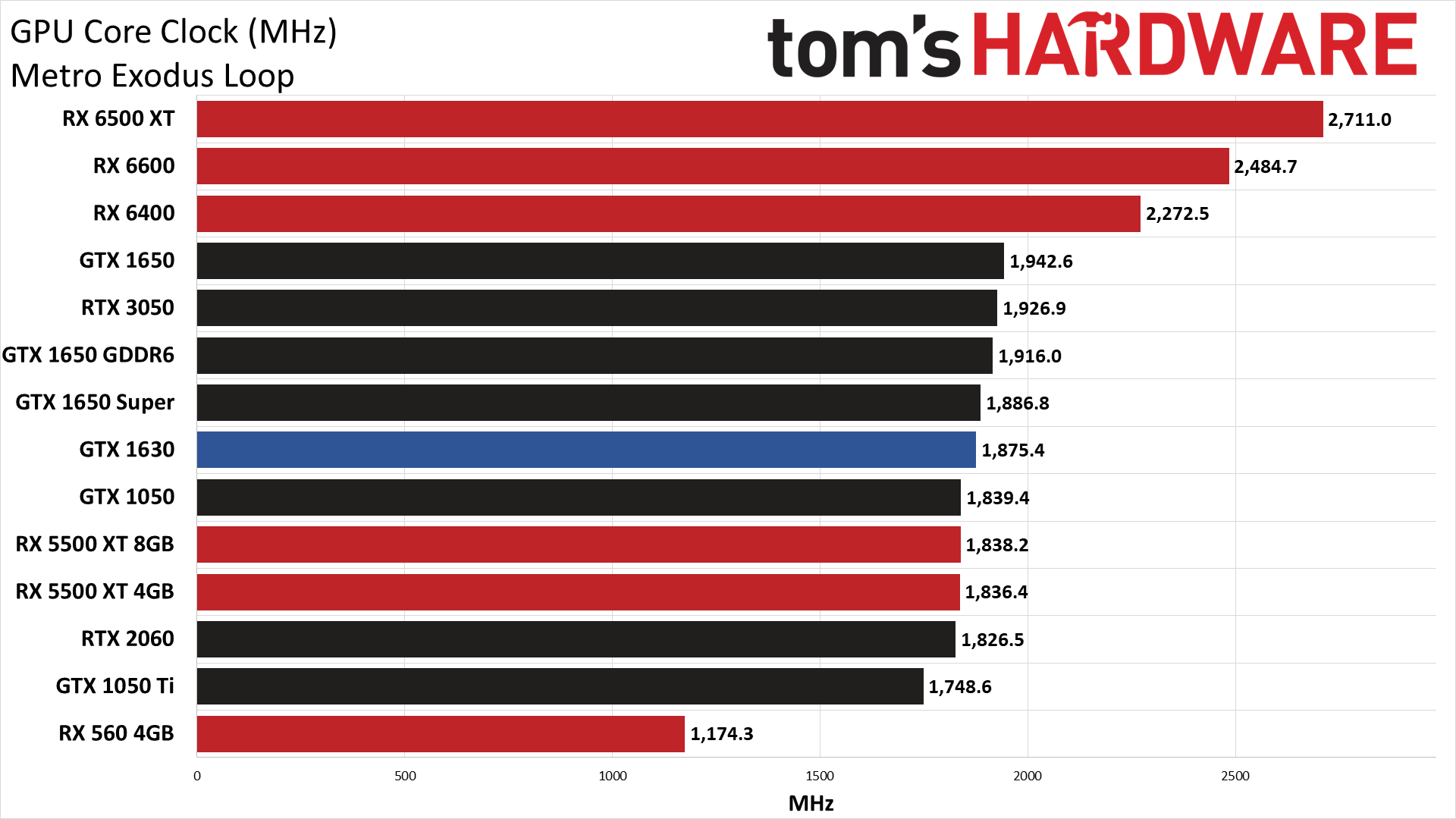
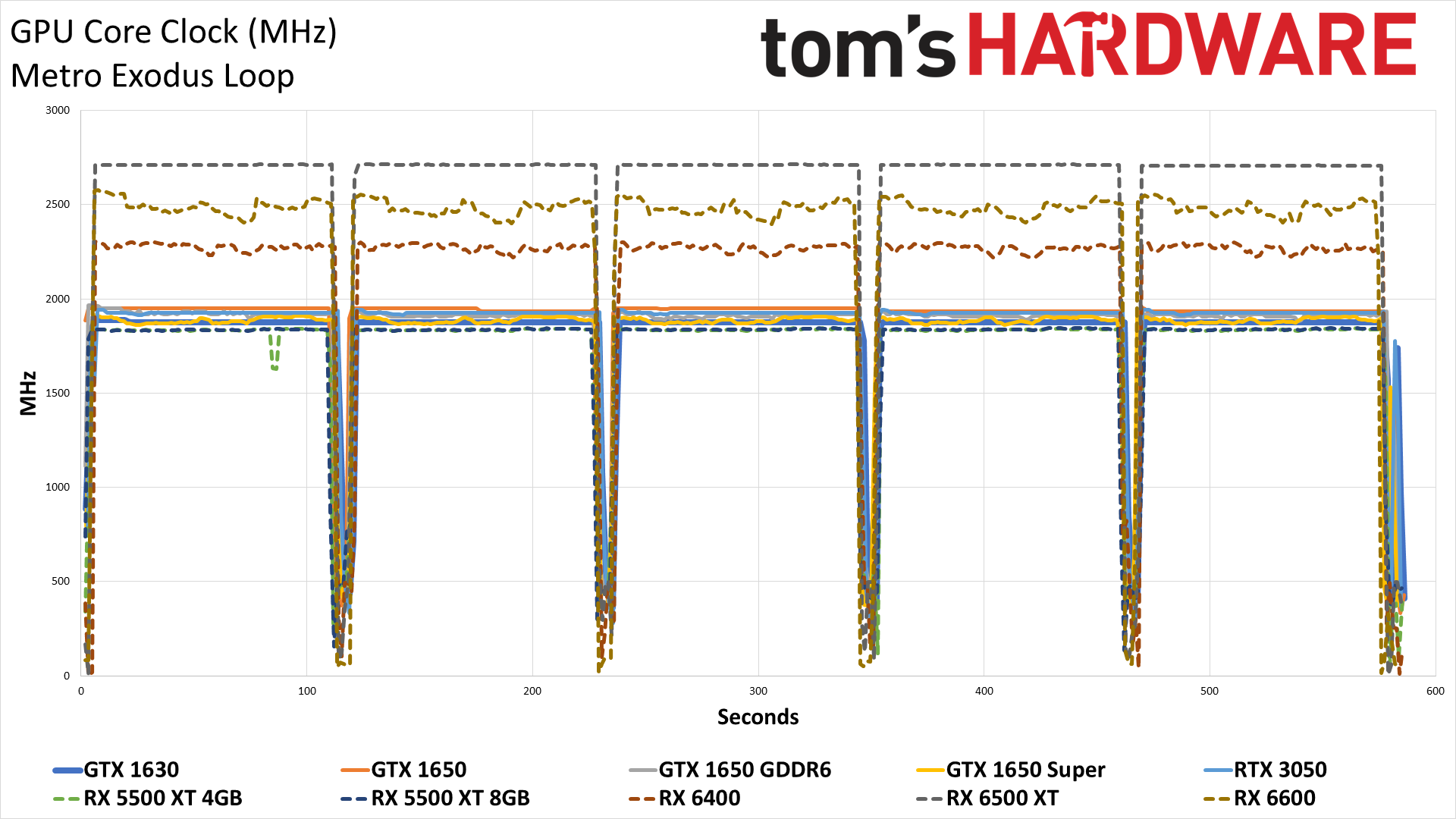
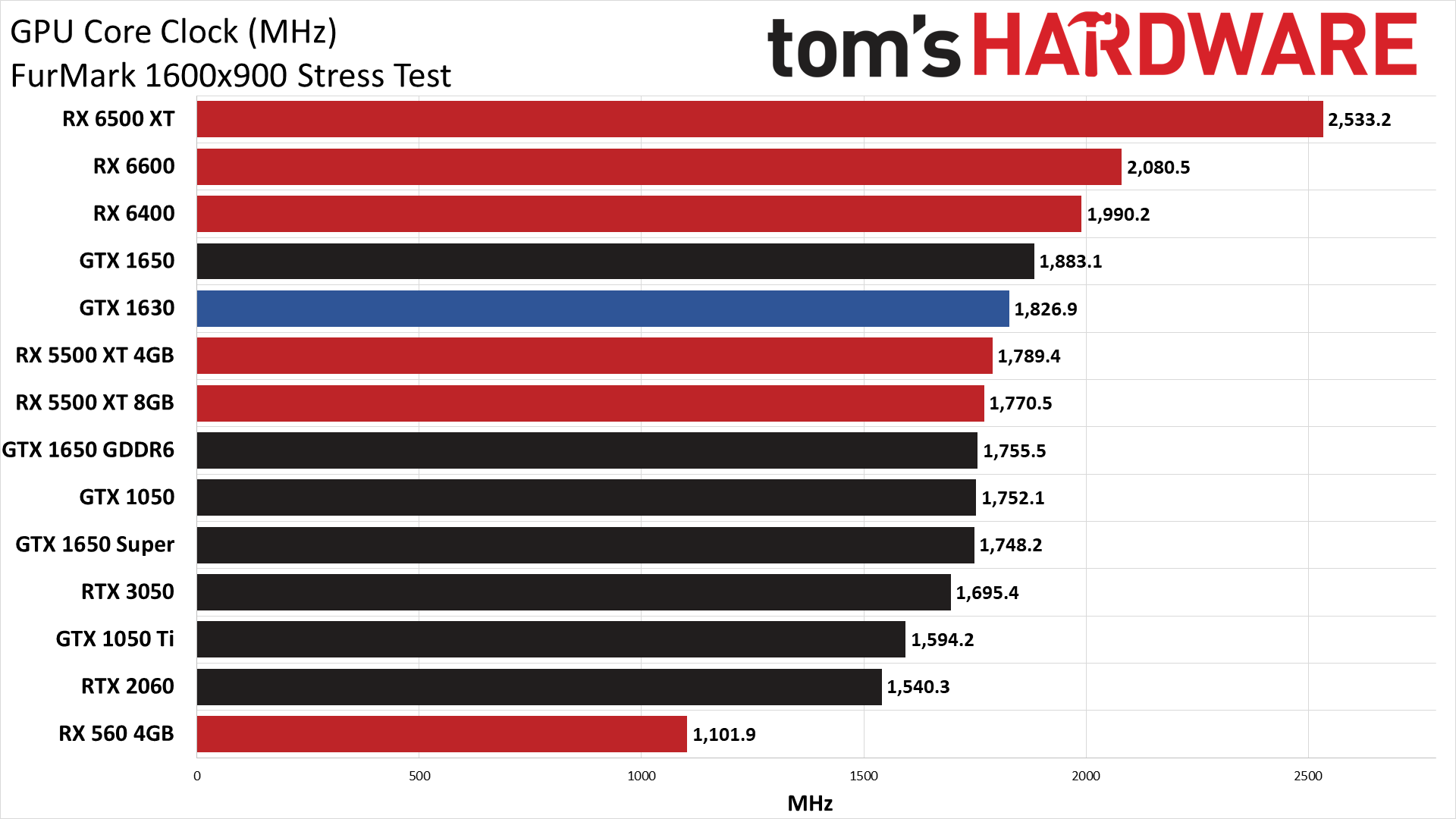
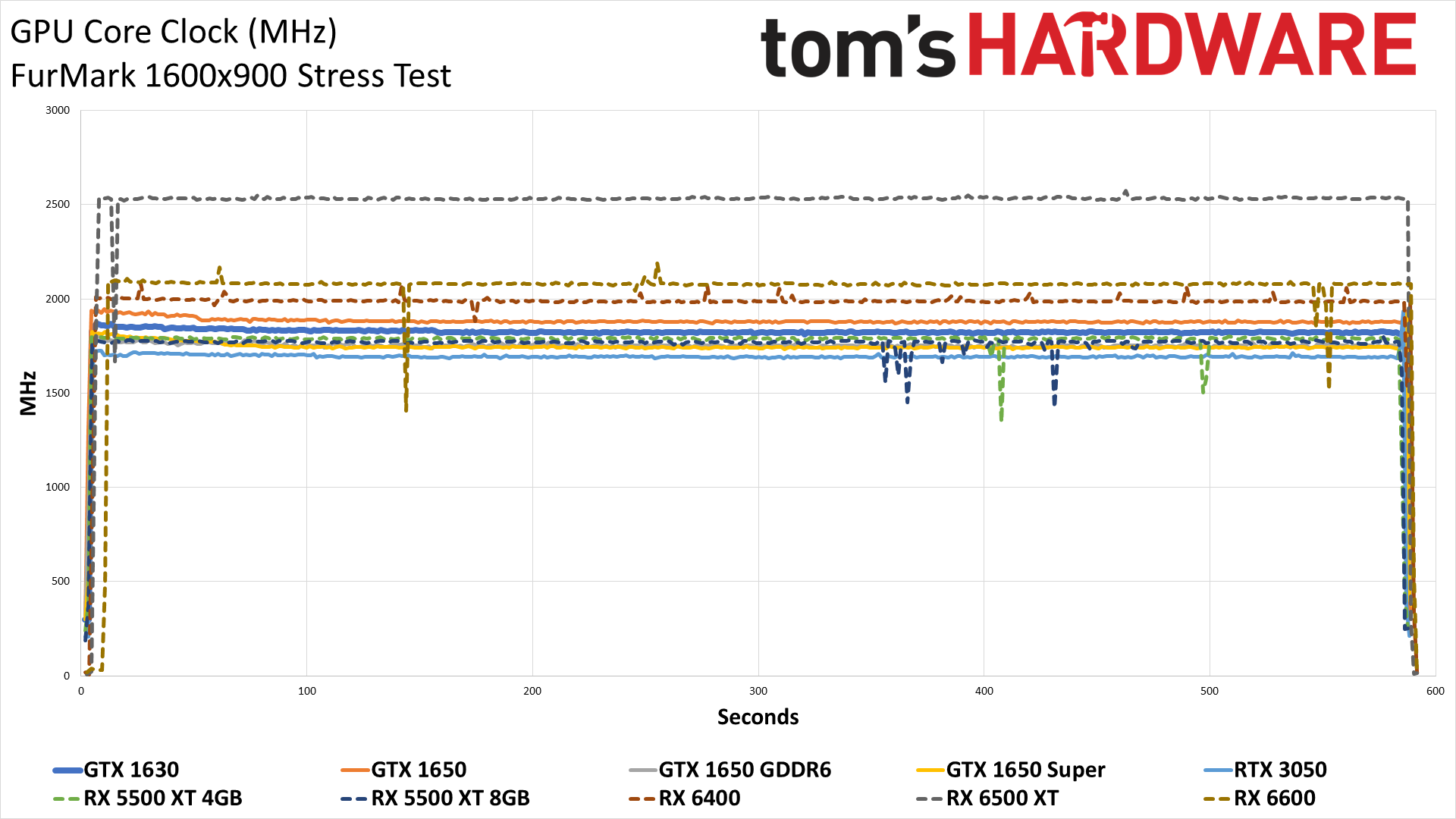
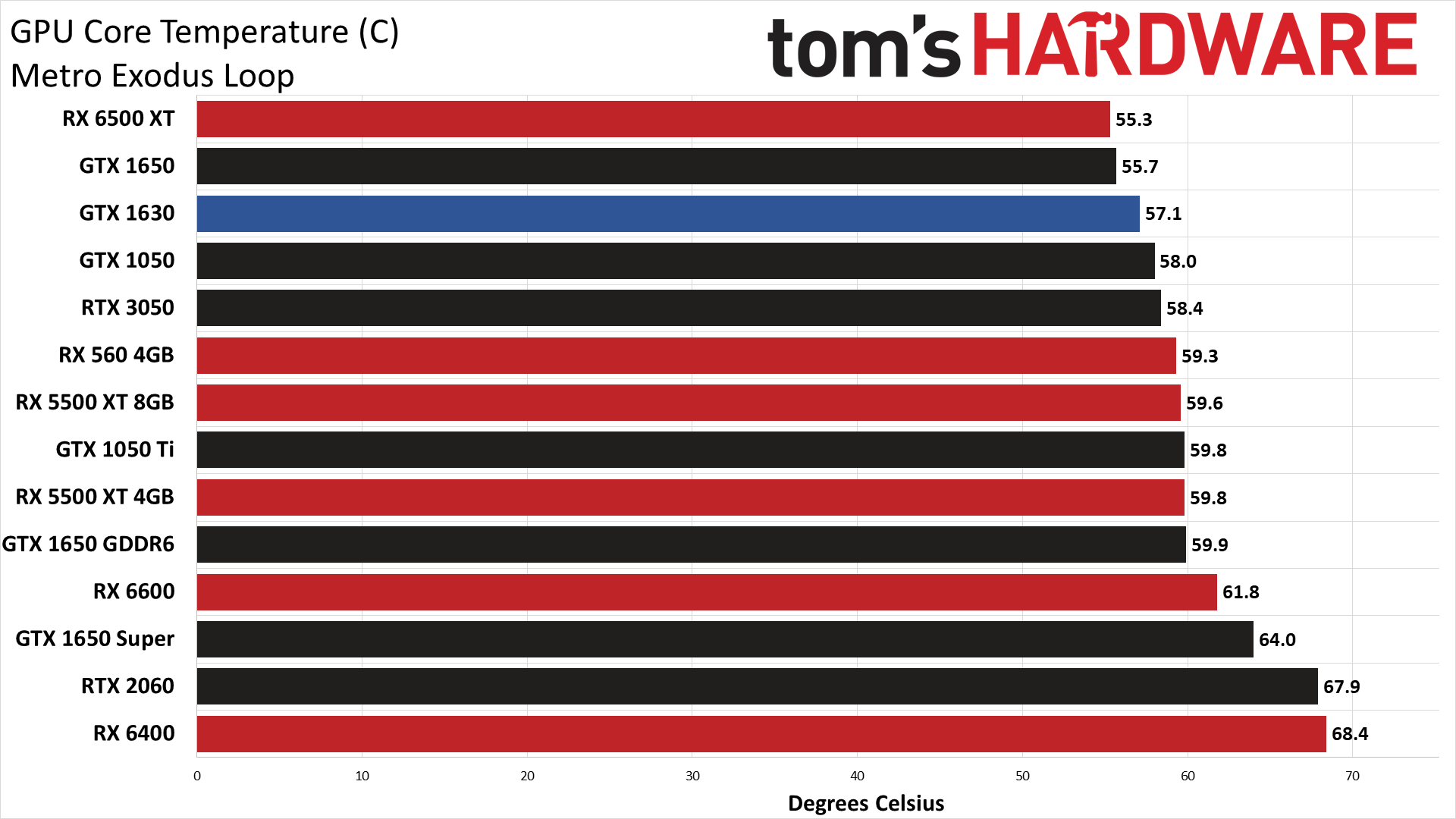
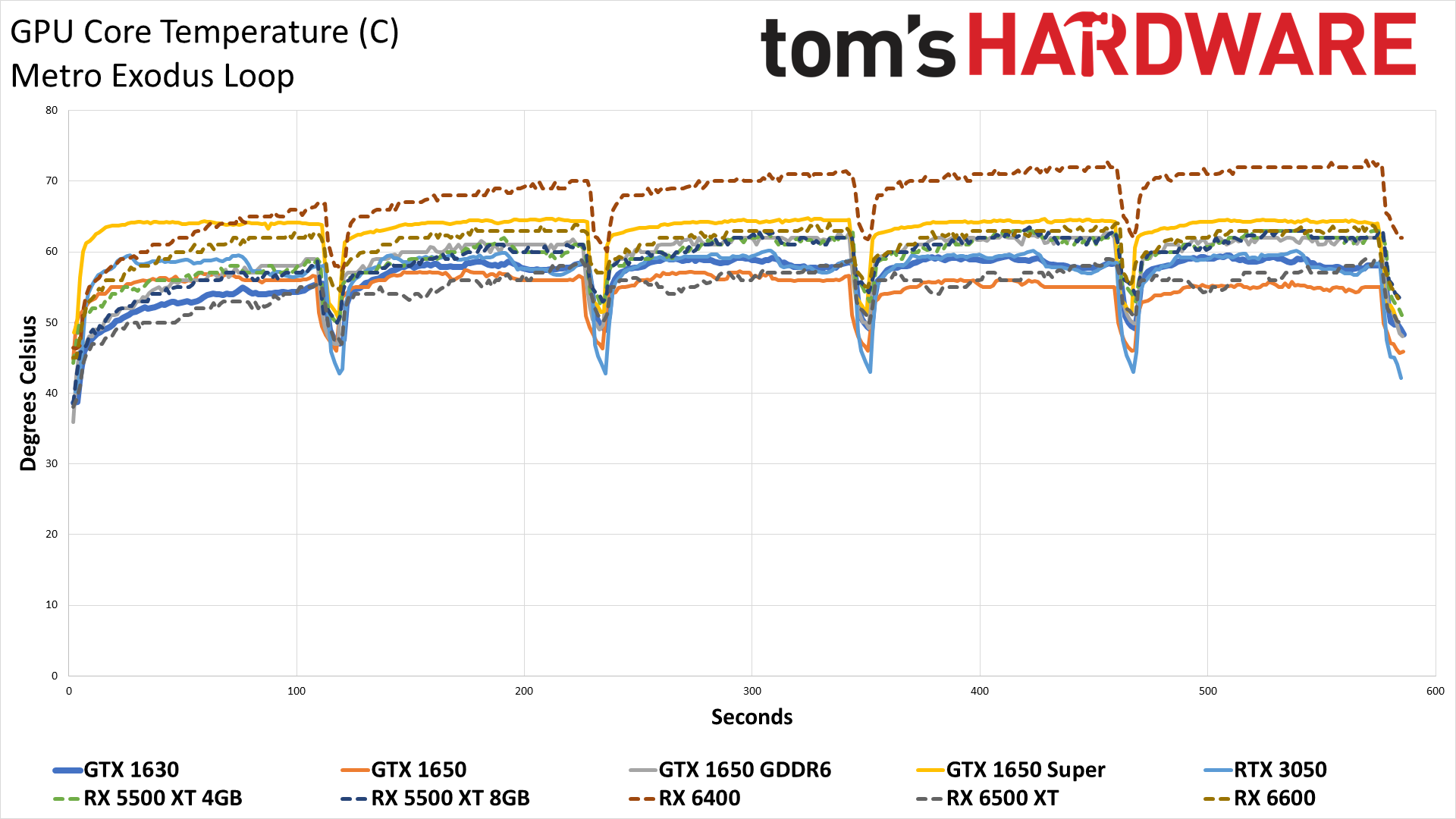
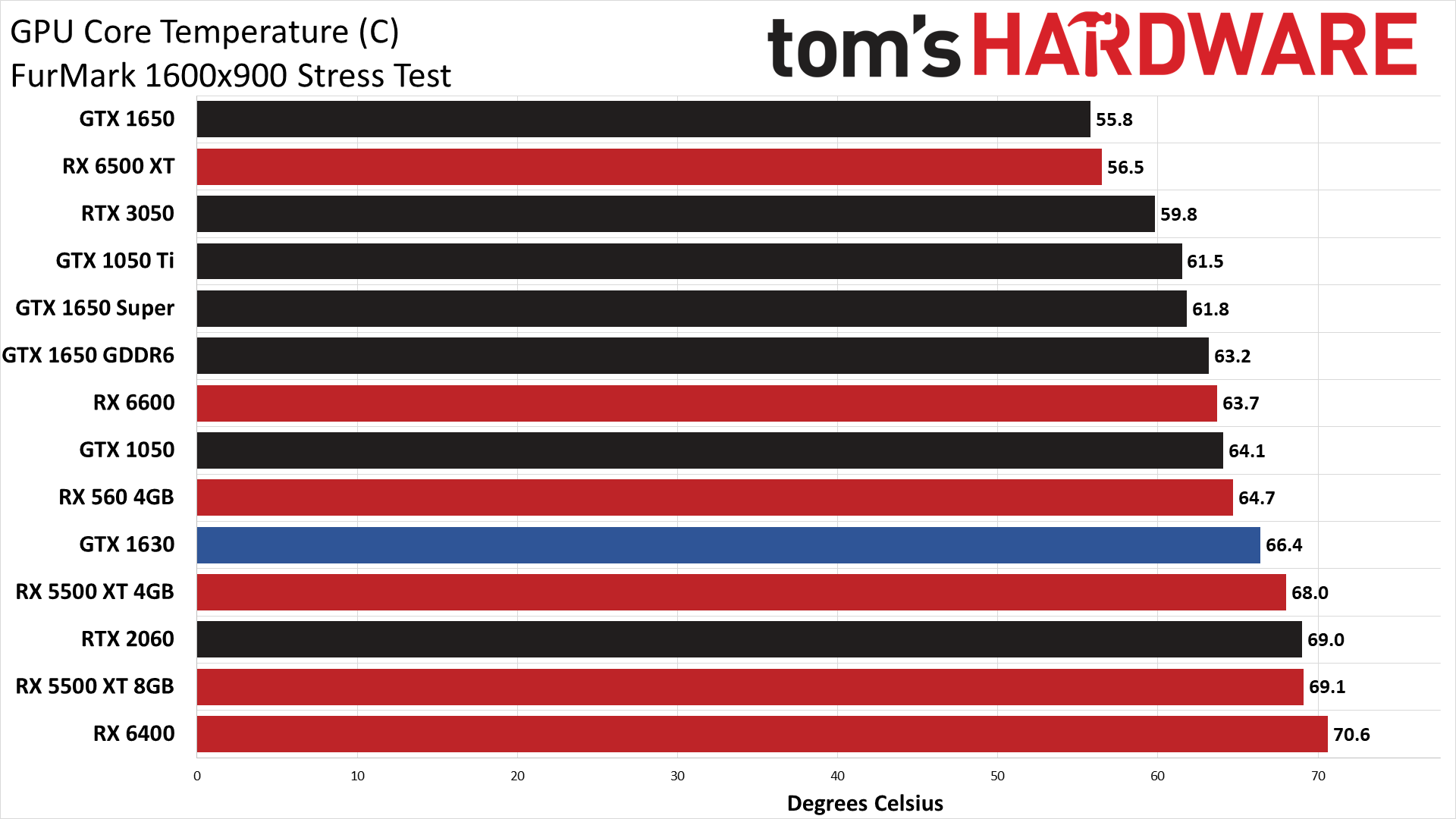
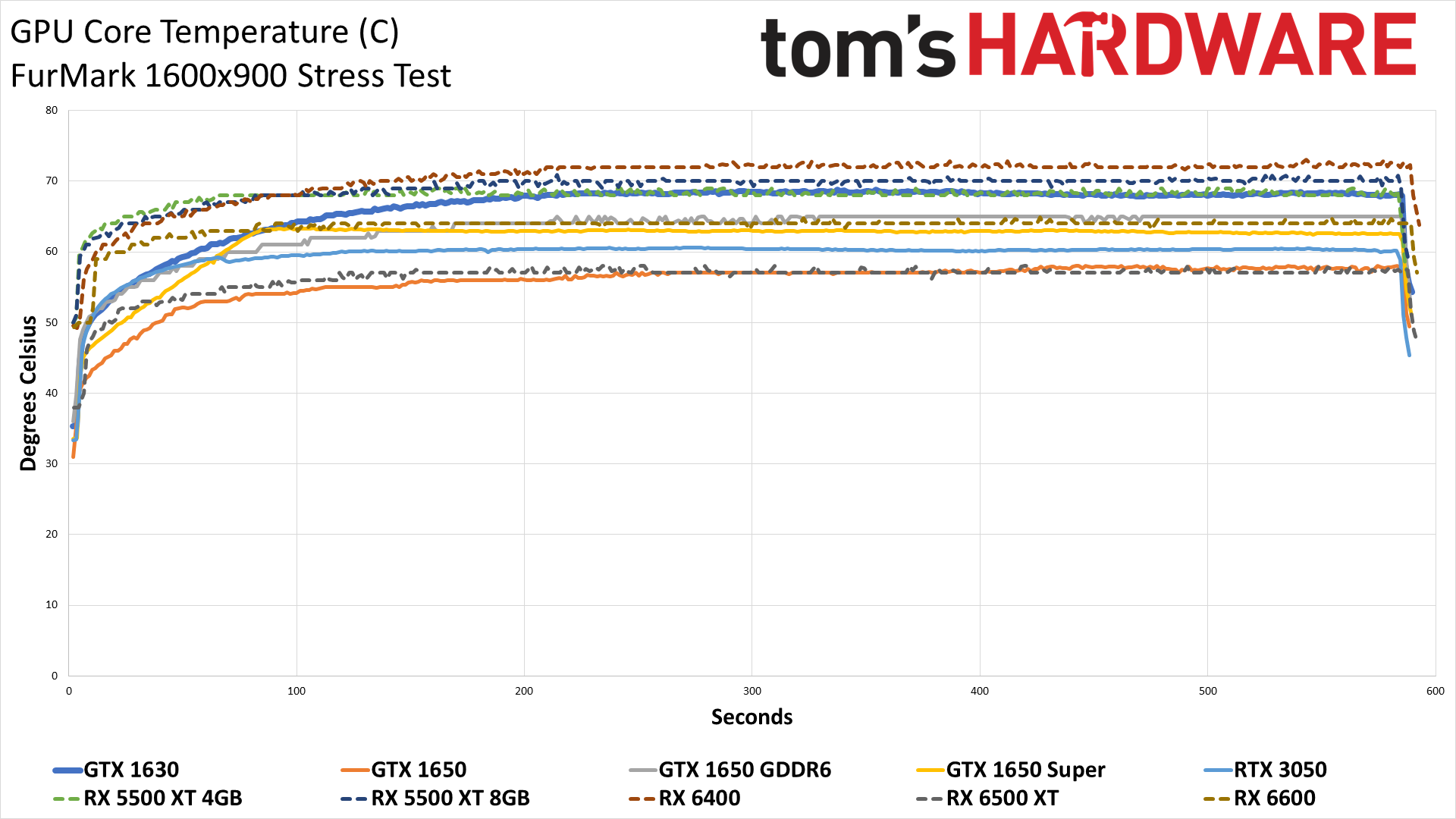

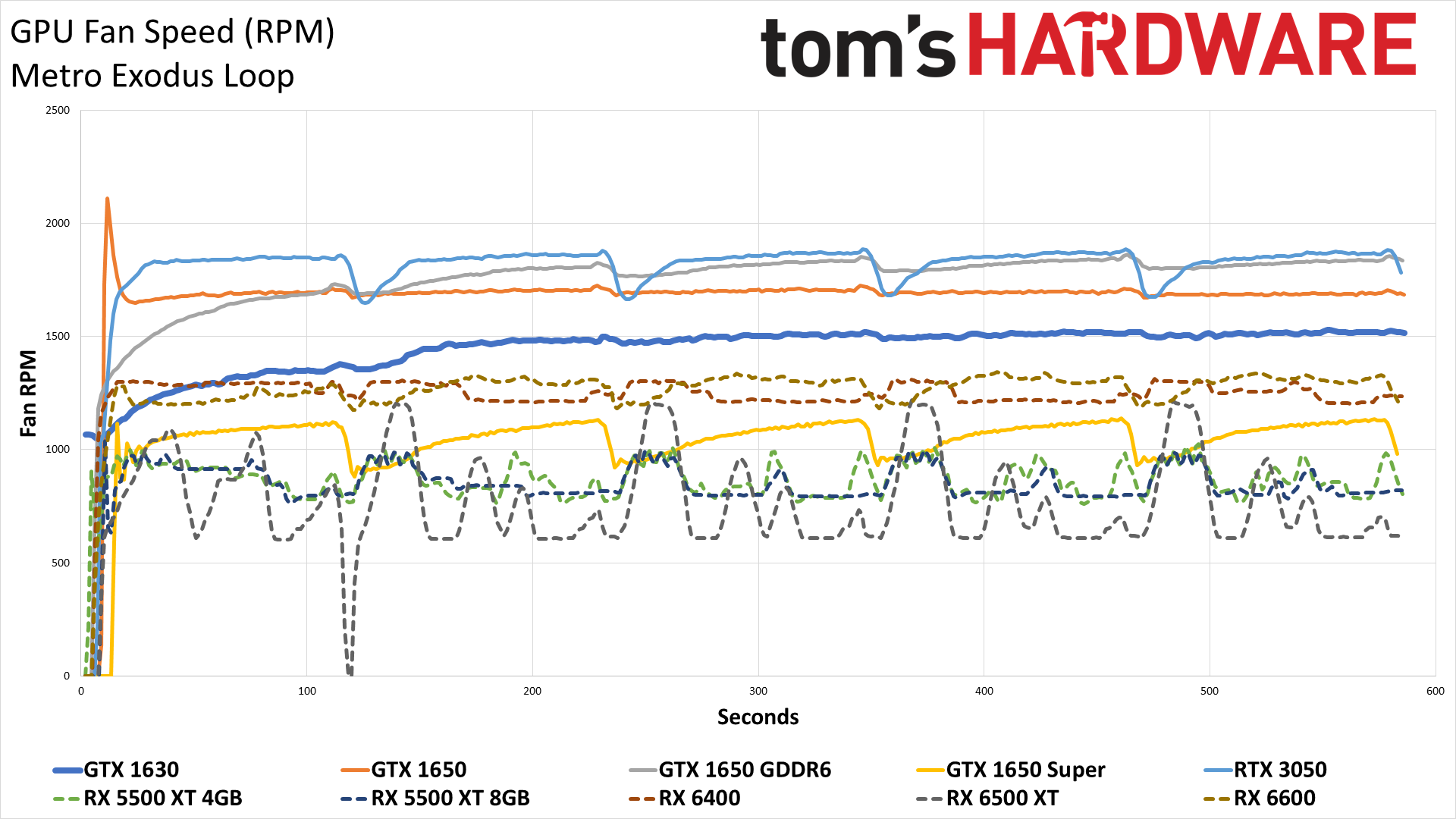
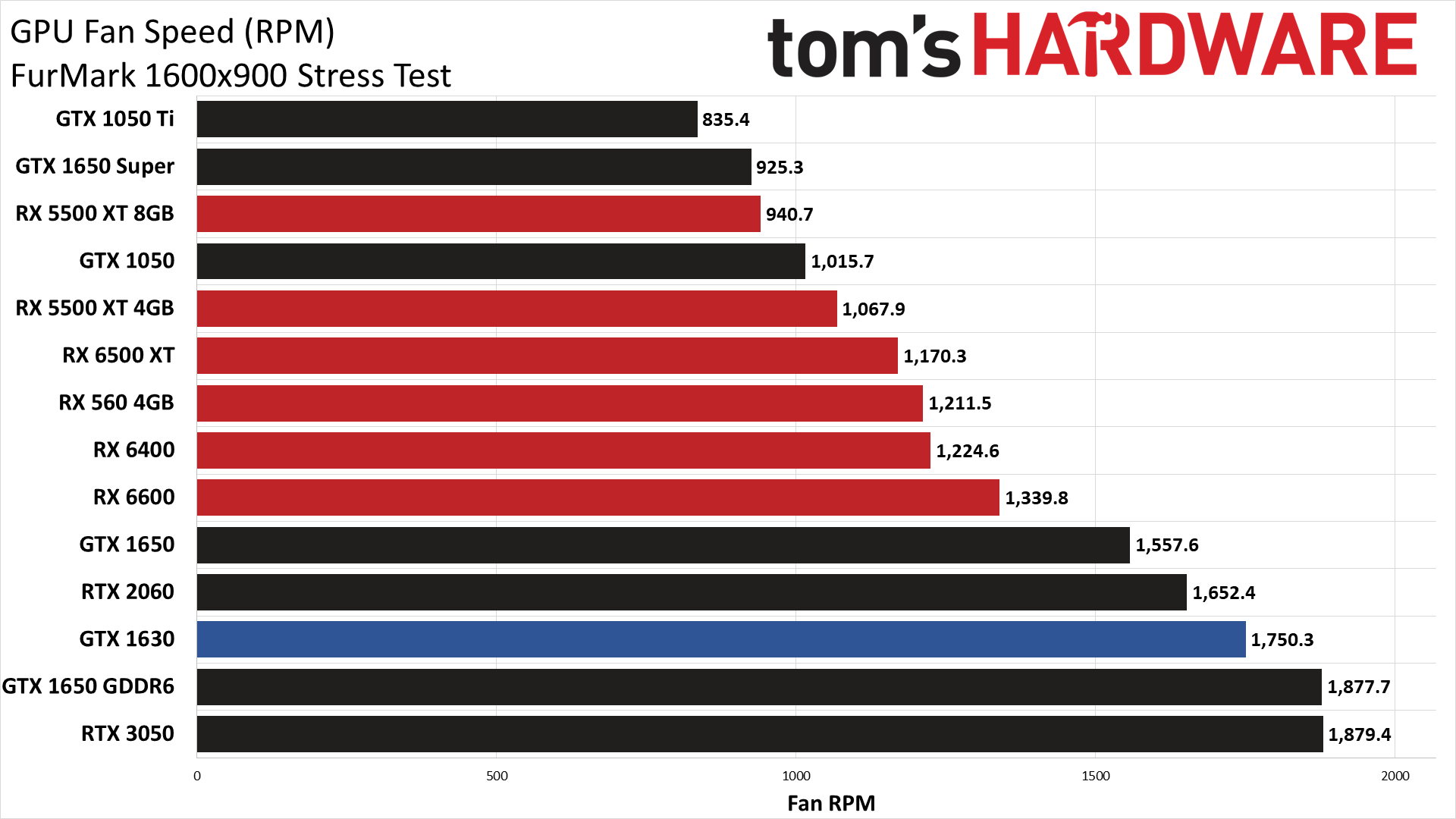
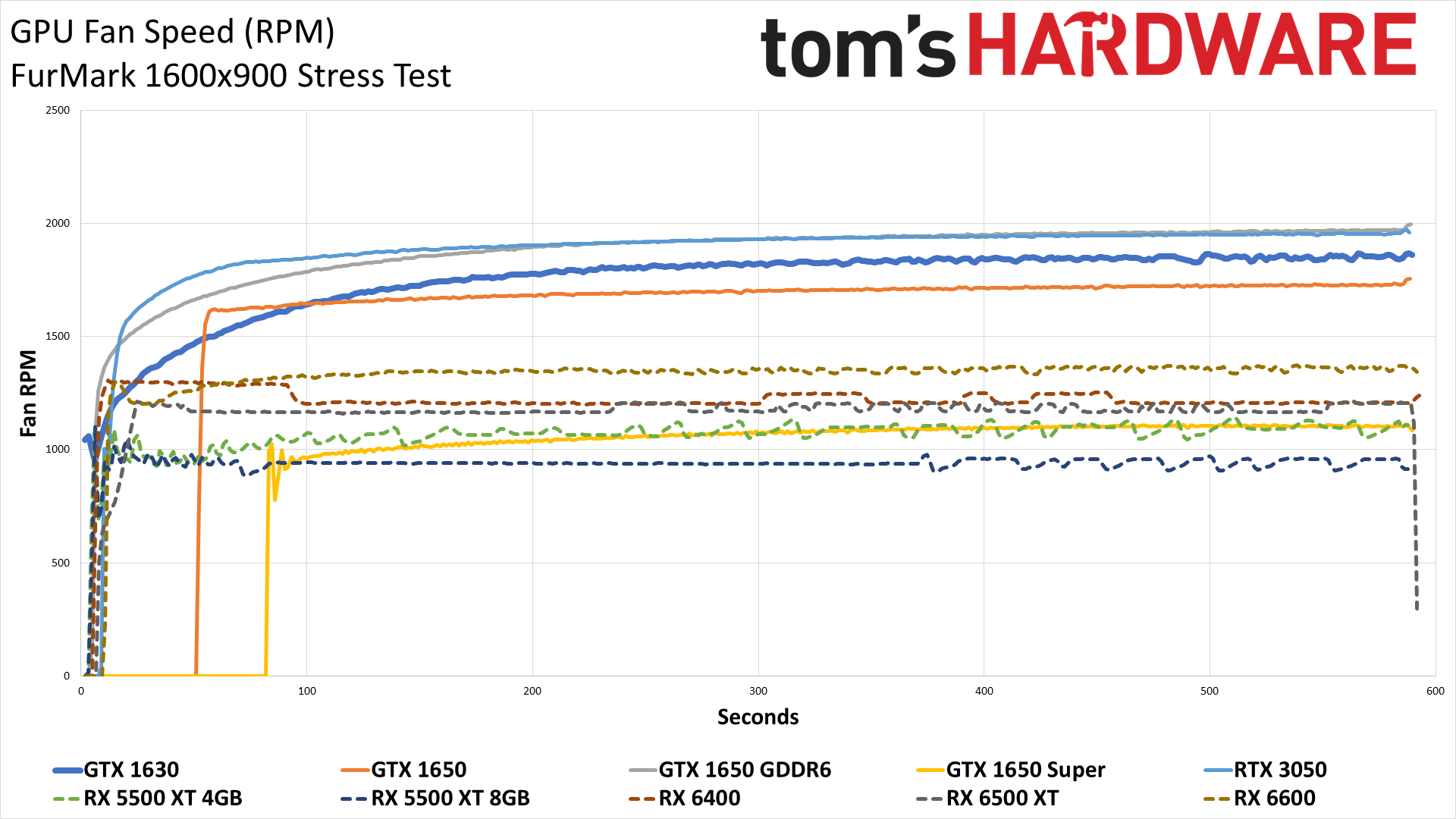
Metro Exodus appears to have taxed the GTX 1630 in such a way as to limit maximum power draw to 55W or less. Some games will push higher power use, particularly at more reasonable settings (for example, Horizon Zero Dawn at its original quality setting broke the 60W mark). FurMark meanwhile was able to max out the card's power use at a steady 72–73W.
There's certainly room for overclocking, but the GPU and memory on the GTX 1630 will fall well short of the speeds that would be necessary to make it a worthwhile purchase. Again, GTX 1650 Super doubles all the important elements and currently costs the same $199 — less if you buy it used. An extra 100 MHz and 14 Gbps VRAM won't come anywhere near closing that gap.
Clock speeds on the GTX 1630 were in line with what we're used to seeing from Turing GPUs: about 100 MHz higher than the rated boost clock for gaming, and even FurMark beat Colorful's stated 1815MHz boost clock.
Temperatures peaked at around 67C in FurMark, while Metro only averaged 57C. Again, some games and settings will push the GTX 1630 a bit harder, but we've used the same test for consistency. Fan speeds also topped out at around 1800 RPM in FurMark, while lighter workloads dropped the fans below 1500 RPM.
We measured noise levels at 10cm using an SPL (sound pressure level) meter, aimed between two two fans. That helps to minimize the impact of the CPU cooling fans, and the noise floor (with the CPU fans running) of our test environment and equipment was <33 dB(A). Colorful's GTX 1630 does not have a 0db mode for the fans, so they're always spinning, and the idle noise was a bit higher at 35.0 dB(A). During our gaming tests, that increased to 39.9 dB(A) and 42% fan speed. Manually setting the fans to 75% resulted in 54.3 dB(A) of noise, though it's unlikely the card would hit such speeds during normal use.
- MORE: Best Graphics Cards
- MORE: GPU Benchmarks and Hierarchy
- MORE: All Graphics Content
Get Tom's Hardware's best news and in-depth reviews, straight to your inbox.
Current page: Colorful GeForce GTX 1630: Power, Temps, Noise, Etc.
Prev Page Colorful GeForce GTX 1630 Gaming Performance Next Page Bottom Line: Colorful GeForce GTX 1630
Jarred Walton is a senior editor at Tom's Hardware focusing on everything GPU. He has been working as a tech journalist since 2004, writing for AnandTech, Maximum PC, and PC Gamer. From the first S3 Virge '3D decelerators' to today's GPUs, Jarred keeps up with all the latest graphics trends and is the one to ask about game performance.
-
King_V Upon reading this review, I feel that I owe you an apology for being such a proponent for the GPU Battle of Meh...Reply
Uh, but, I guess it's better than the 1050 non-Ti, so, uh, that's . . no, I can't even get myself to say it's some kind of victory.
My sympathies for your suffering on this one, @JarredWaltonGPU -
Eximo OEMs are still selling GTX1650 and 1650 Super in low end gaming desktops. Just don't see this happening, practically e-waste unless they cut the price in half.Reply -
PiranhaTech Reply
I don't mind weak GPUs from Nvidia or AMD as long as they are priced okay. There's been a few times where an integrated GPU doesn't work for whatever reason (for a PC not used for gaming), or my good GPU goes out, I'm short on money, and I need a working PC.King_V said:Upon reading this review, I feel that I owe you an apology for being such a proponent for the GPU Battle of Meh...
Uh, but, I guess it's better than the 1050 non-Ti, so, uh, that's . . no, I can't even get myself to say it's some kind of victory.
My sympathies for your suffering on this one, @JarredWaltonGPU
They definitely have their uses. However, come on! With that kind of performance, be $120 at most, probably $80-100. It's 75W on top of all of this. I could be more forgiving if it ran at 50W or lower. Give us something, Nvidia! The GT 1030 is a 30W GPU -
King_V Reply
Well, as predicted when the specs were announced and when the card first came out, Nvidia released a GPU that makes the RX 6400 look like a hero.PiranhaTech said:I don't mind weak GPUs from Nvidia or AMD as long as they are priced okay. There's been a few times where an integrated GPU doesn't work for whatever reason (for a PC not used for gaming), or my good GPU goes out, I'm short on money, and I need a working PC.
They definitely have their uses. However, come on! With that kind of performance, be $120 at most, probably $80-100. It's 75W on top of all of this. I could be more forgiving if it ran at 50W or lower. Give us something, Nvidia! The GT 1030 is a 30W GPU -
waffleinc When I first heard about this GPU, I was somewhat excited. At the time, I needed a cheap and cheerful GPU for nothing more than basic home use and video encoding. I figured that as long as it's only $100, that would be fine, even with the low core count and slow memory. Then I saw that it would be $200 and 75w. Yeah, no thanks.Reply -
Giroro What version of NVENC does it have?Reply
I assume the older/worse version of the GTX 1650... If so, I wouldn't even want this for $100... Maybe $80.
With the updated encoders, I could see myself paying nearly $125 as an entry point to throw my old 3700x into a dedicated streaming PC.
But today Newegg has a 1660 Super for $210 ($30 MIR), and you can get an RTX 2060 for $250 (which also completely embarrasses the pricing of the RTX 3050).
Nvidia needs to step back get real with how they're letting their board partners price their crappy new cards. -
JarredWaltonGPU Reply
I'm still waiting for the "joy" of testing Arc A380. I mean, technically it should perform pretty decently based on specs. But I am not at all looking forward to the driver shenanigans I'll likely have to deal with. On the bright side, it's taken so long to get the GPU shipped from China that drivers will hopefully be quite a bit better by the time the card arrives! Also, AV1 encoding should be interesting, assuming it works properly. I'll try to encode and upload the A380 video using its AV1 hardware. 🙃King_V said:Upon reading this review, I feel that I owe you an apology for being such a proponent for the GPU Battle of Meh...
Uh, but, I guess it's better than the 1050 non-Ti, so, uh, that's . . no, I can't even get myself to say it's some kind of victory.
My sympathies for your suffering on this one, @JarredWaltonGPU -
Thunder64 The article basically says "Don't buy this crap" and yet 2/5 stars. What is a one star product? This costs the same as much better cards and still requires external power.Reply
Giroro said:What version of NVENC does it have?
I assume the older/worse version of the GTX 1650... If so, I wouldn't even want this for $100... Maybe $80.
With the updated encoders, I could see myself paying nearly $125 as an entry point to throw my old 3700x into a dedicated streaming PC.
But today Newegg has a 1660 Super for $210 ($30 MIR), and you can get an RTX 2060 for $250 (which also completely embarrasses the pricing of the RTX 3050).
Nvidia needs to step back get real with how they're letting their board partners price their crappy new cards.
Or for $10 more on Amazon you could get an RX 6600. That would have a bit more performance but more importantly 8GB of RAM.
JarredWaltonGPU said:I'm still waiting for the "joy" of testing Arc A380. I mean, technically it should perform pretty decently based on specs. But I am not at all looking forward to the driver shenanigans I'll likely have to deal with. On the bright side, it's taken so long to get the GPU shipped from China that drivers will hopefully be quite a bit better by the time the card arrives! Also, AV1 encoding should be interesting, assuming it works properly. I'll try to encode and upload the A380 video using its AV1 hardware. 🙃
How are you even going to review it? Intel should betting more flak about having to put games into "tiers". Do you separate your review by tier? The conclusion could be quite different depending on what you intend to play. -
missingxtension This is just a slap in the face, so disrespectful. Rx6400 was so disrespectful, then Nvidia comes and "hold ny beer".Reply
I am waiting to see if Intel at least ca do something reasonable for the price, I just can't see Intel being good at pricing. But this guys here make em look like the value leader. Wait till the recession and shrinking computer market comes, they are trying to cause it. -
hannibal Nvidia knows exactly how fast (slow) this GPU is! When this is $199, just ques how much more faster GPUs are gonna cost!Reply
4050 should cost douple of this gpu so $400 and that still makes 4050 to look good compared to this gpu.
The GPU price hike is not over, at least according the Nvidia!
